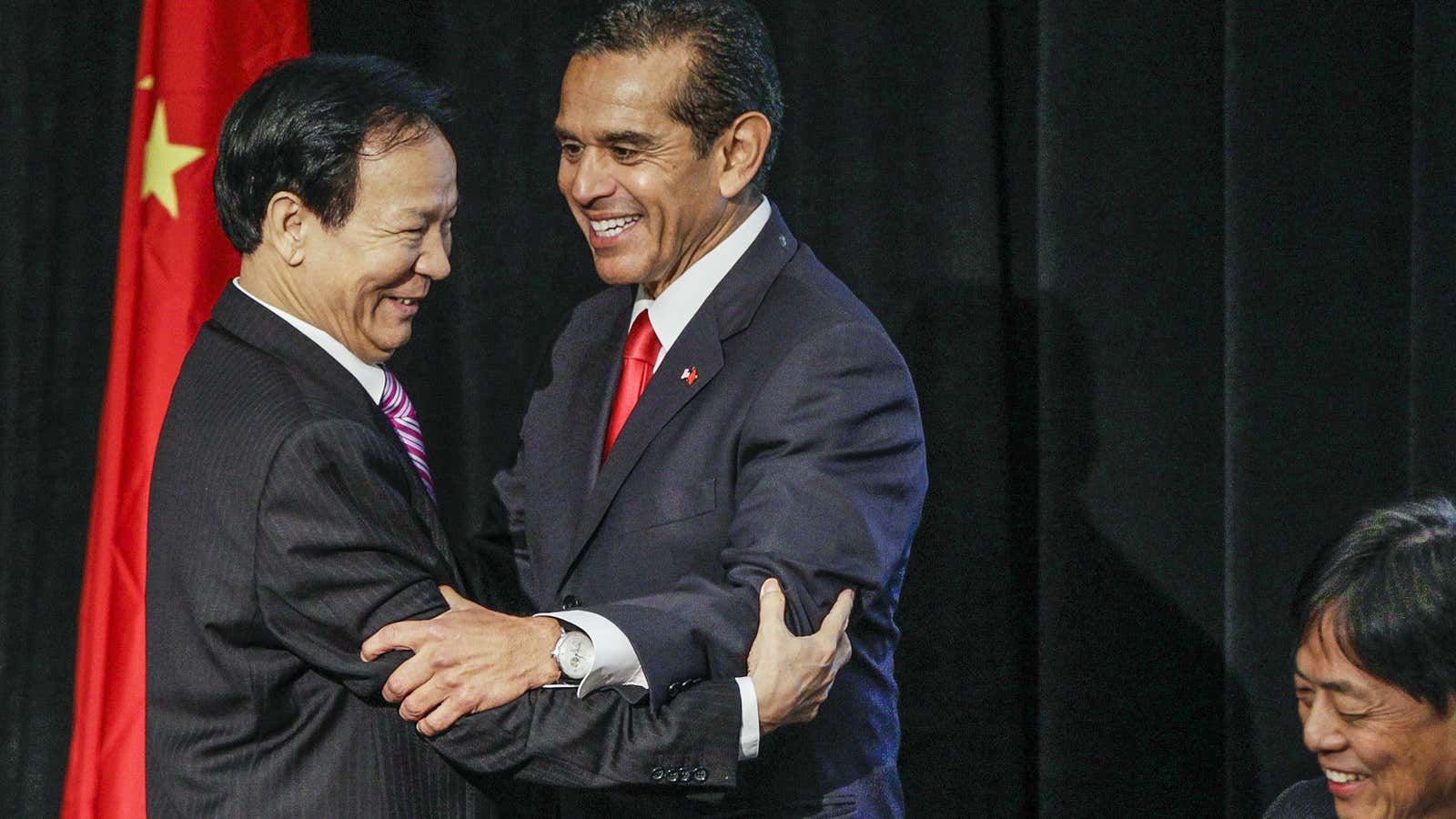America needs at least $8.2 trillion to keep energy, water and transportation infrastructure in a good state of repair between now and 2030, according to a new report by the US Chamber of Commerce. The best way to cover that gargantuan expense? Investment from China.
The idea of Chinese control over critical US infrastructure like power and water plants or airports is enough to get a number of US officials up in arms. Lawmakers have already said American companies should not to do business with Chinese firms Huawei and ZTE for fear of enabling Chinese government influence over domestic telecom equipment. And it’s not only the US that is sensitive. Over $200 billion in potential mergers or acquisitions around the world have fallen through because of political or regulatory opposition to Chinese investment, according to the US think tank, the Heritage Foundation.
That’s a missed opportunity, the US Chamber report says. Chinese investment in the US last year reached a record $6.5 billion, but even that is only a fraction of the People’s Republic’s total overseas foreign direct investment, or OFDI. China’s OFDI is low compared to the size of its economy, but at $77 billion last year, it is still the world’s sixth largest overseas investor. The US needs capital for expanding energy supplies, but also for drinking or waste water treatment equipment, highways, and bridges. Annual expenses should be about $455 billion, and that doesn’t even cover operation and maintenance or upgrades.
What makes China a good candidate is that it is already investing in infrastructure in foreign countries, including the US, and in some cases in quite sensitive sectors. In the UK, Chinese investors can own majority stakes in future nuclear plants. The country’s sovereign wealth fund, China Investment Corporation, (CIC) also owns 9% of the company that controls the UK’s largest water and sewage company. In the US, CIC owns a minority stake in EIG Global Energy Partners, an asset manager that invests in energy and resources-related infrastructure. That’s on top of its 17% stake in the American power company AES. The state-owned oil giant Sinopec also announced earlier this year it is buying half of one of Chesapeake Energy’s oil and gas fields in Oklahoma and Kansas.
There are already signs that Chinese state-owned firms aren’t quite the bogeymen they used to be in the eyes of Americans. After being blocked from buying California oil giant Unocal in 2005, China’s state-owned Chinese National Offshore Oil Corporation hired PR firms to help lobby US regulators to approve its purchase of Canadian oil and gas firm Nexen, which has operations in the Gulf of Mexico. US regulators approved the deal in February.
The fact that Chinese investment in the US is gradually changing may make things easier. As we’ve reported, Chinese investment may not always be from state-owned firms. In 2010, state-owned enterprises accounted for about 70% of Chinese (pdf, p.12) overseas direct investment. But in the first three quarters of 2012, that proportion flipped, and private Chinese firms made up 62% of overseas deals.
